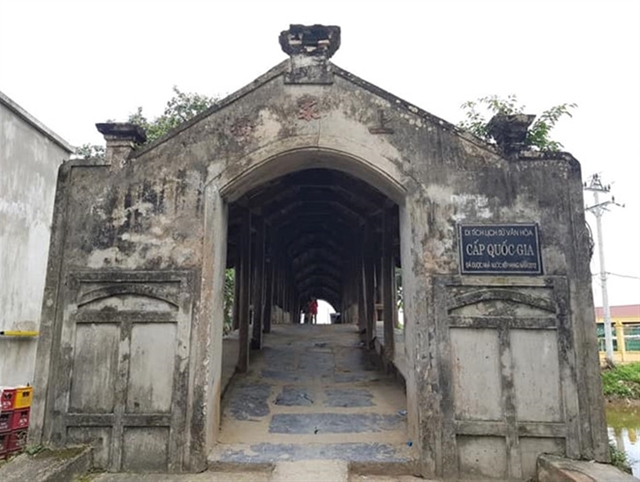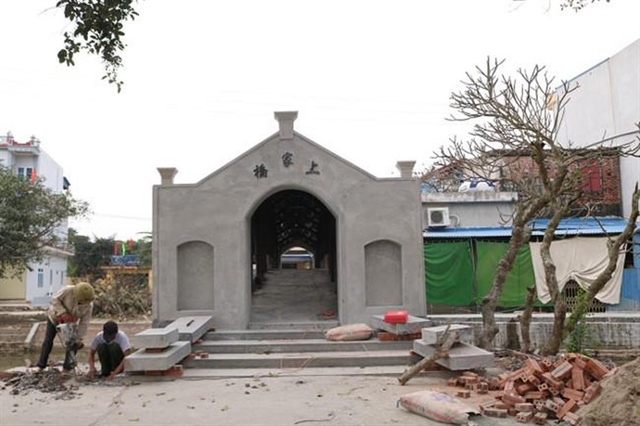 Life & Style
Life & Style

Local authorities of Nam Định Province have assigned involved agencies to restore the orginal for of a roofed bridge dated 15th century.
NAM ĐỊNH – Local authorities in Nam Định Province have responded to public complaints regarding renovation work on a bridge that dates back to the 15th century. The botched job has left the once revered site in a state of limbo, swaying between the old and the new.
The Cầu Ngói Chợ Thượng Bridge can be found in Thượng Nông Village, Nam Định Province.

|
| Old gate at an entrance of the bridge. Photo tien phong.vn |
Builders were hired to mend the bridge, but instead painted the mossy gate to the bridge, covering up old decorative patterns.
Nguyễn Tiến Dũng, director of the Nam Định Department of Culture, said when he heard the news, he asked an official from the department to check the site.
“The bridge looks like it's new, and completely different from the original design. It's lost all the old decorative patterns, mossy colour and ancient style,” he said. “I have asked authorities to return it to its original form.”
Bình Minh Commune’s People’s Committee decided to renovate the bridge due to disrepair and a leaking roof.
“The roof has been fixed following the original design,” Dũng said. “But the gate and staircase have been rebuilt. Authorities went ahead without informing us.”
Trần Xuân Bình, head of the Nam Định Relic and Landscape Management Board, said he had asked the commune to restore the gate.

|
| The new gate to the bridge. Photo giaoducthoidai.vn |
Experts from the Relics Preservation Institute have confirmed the original bridge is still intact since the renovation. Bình Minh Commune will pay for stripping the new painted and cement on the gate, and restoring the original patterns.
Nam Định Province is home to 365 relic sites recognised by the State.
“We have assigned agencies to check on all relic sites, especially those that have provincial and national recognition,” he said.
The bridge was built during the Hậu Lê Dynasty (1428-1789) with contributions from Nguyễn Thị Ngọc Xuân, a concubine of the Trịnh Lord.
Its foundations were built on big stones while the frame was made of wood.
In 1993, the wooden railings were replaced by stone pillars.
The bridge was recognised as a national historical and cultural relic site in 2012.
Architect Hoàng Đạo Cương, director of the Relic Preservation Institute, said the biggest value of the bridge was its wooden frame and roof, which luckily had not been damaged beyond repair during the restoration work.
The Pagoda Bridge in Hội An, Thanh Toàn Bridge in Huế, Lương Pagoda Bridge in Nam Định and Phát Diệm roofed bridge in Ninh Bình were built in a similar design. VNS




